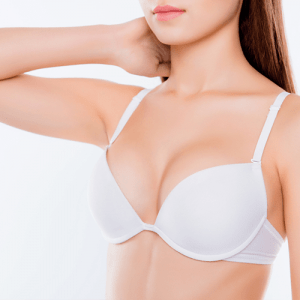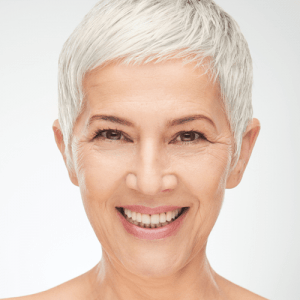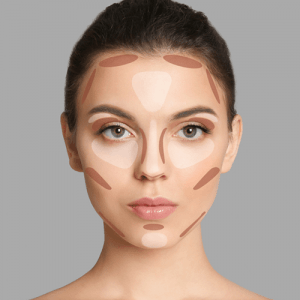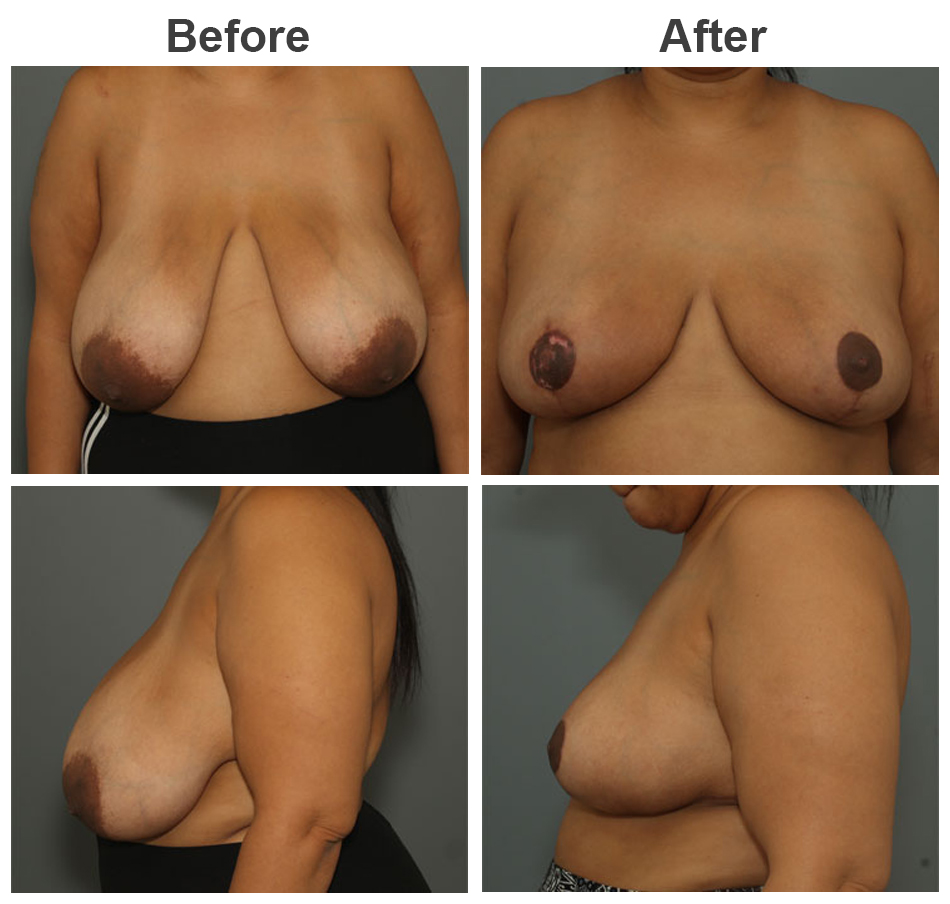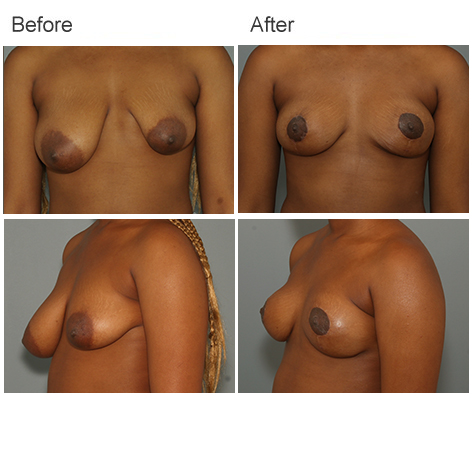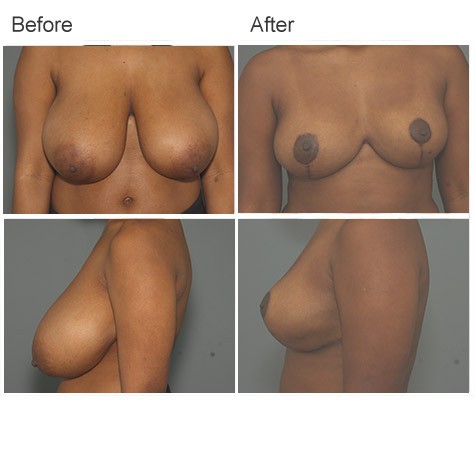Breast Reduction
Some women develop breasts that are larger than they would like. The consequences may be aesthetic – a matronly look with a disproportion between the chest and the rest of the figure. There are also commonly functional problems – back and neck pain, bra strap grooves on the top of the shoulders, a stooped posture, skin changes from chronic moisture under the breasts, and occasionally breast pain resulting from the weight of the breasts pulling away from the chest wall. To address this problem, reduction of the weight of the breast is a welcome relief.
Breast reduction, however, must address more than just excess weight. Almost always, the nipple and areola are sitting lower on the chest wall than is proper.
The breast shape may be flattened, and there is a surplus of skin, especially when the volume of breast tissue is reduced. This excess skin makes the breast look droopy – called “ptosis.” Reduction of the breasts is one of the most appreciated operations performed by plastic surgeons.
Breast Reduction FAQs and Videos
Written and reviewed by:
This article was written by Dr. Vincent Zubowicz, who is board certified by the American Board of Plastic and Reconstructive Surgery. He practices medicine at his offices in Milton and Atlanta. Learn more about Dr. Zubowicz, his medical training, and credentials.
Customer Reviews


Dr. Vincent Zubowicz is one of the Atlanta areas top plastic and reconstructive surgeons. He is an expert in cosmetic surgery, with years of experience performing many plastic surgery procedures. He offers a personal, customized approach and is dedicated to helping patients achieve the most natural looking results.
Call our office at 470-462-2917 to schedule your consultation with Dr. Vincent Zubowicz.


